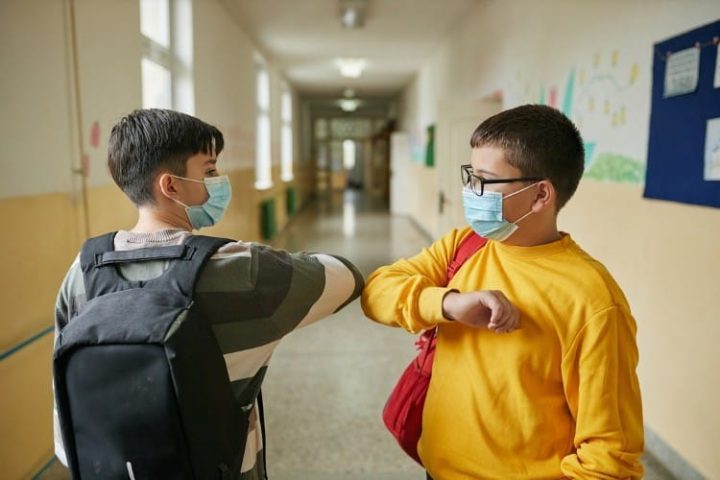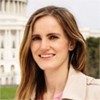
California is set to end a universal indoor mask mandate for fully vaccinated people next week and roll back other COVID-related restrictions, officials announced Monday. The rules exclude schoolchildren, who still will be required to wear masks regardless of their vaccination status.
Citing the steadily decreasing rates of community transmission, infection, and hospitalizations, California health officials decided to drop numerous restrictions, including the indoor mask mandate for those who are fully vaccinated.
In its updated guidance on mask-wearing, the California Department of Public Health praised residents who got vaccinated and boosted and who used enhanced masking protocols. Those measures, the officials believe, helped drive COVID infection rates down.
The officials also attributed mask-wearing in public schools to the low rate of infections in children, who are not at risk of getting sick with COVID to begin with.
Claiming that during the Delta surge in July and August 2021, jurisdictions without mask requirements in schools experienced larger increases in pediatric case rates, and school outbreaks were 3.5 times more likely in areas without a school mask requirement, California health officials concluded that proceeding with the mask mandate for kids is for the best.
The other “high-risk” settings where masks will be required include healthcare settings, public transport, homeless shelters, senior healthcare facilities, and jails.
Even though not mandated, surgical masks and respirators such as N95s, KN95s, KF94s are “strongly recommended” for use.
The department also stressed that masks continue to be mandatory for unvaccinated individuals in indoor public settings and businesses, such as retail stores, restaurants, theaters, family entertainment centers, meetings, and state and local government offices. Even fully vaccinated Californians are recommended to continue indoor masking “when the risk may be high.”
Further, the guidance provides that businesses may want to either implement vaccine verification systems or allow for patrons to self-attest their vaccination status. That way, businesses could separate those who are “allowed” to forgo masks from those who are not. The third option would be mandating that every patron wear a mask.
Scientifically, requiring unvaccinated patrons to mask up while letting the vaccinated guests skip the measure does not make much sense, since the fully vaccinated and boosted people get infected and spread the virus to others at a similar rate to the unvaccinated, per the Centers for Disease Control and Prevention (CDC).
Children younger than two, those with hearing disabilities, individuals with a medical condition that prevents them from wearing a mask, and some other medical and professional categories are excluded from the rule.
It is within the law for local governments to set in place their own indoor masking requirements that could differ from those established by the state. Last week, Los Angeles County’s health officials stated their intent to keep the universal indoor masking requirements in place.
Masking in schools
California Governor Gavin Newsom has been a vocal proponent of the state’s requirement that students and teachers wear masks in schools. In addition to that, he announced back in October that the state would require schoolchildren to be vaccinated against COVID-19 once the shot gets full regulatory approval.
The developments come as Democrat-run states New Jersey and Delaware announced plans Monday to lift the statewide mask mandate in schools next month. Even Oregon, which has just recently signaled that universal masking in schools could be made “permanent,” reversed its course and said that masking will be dropped no later than the end of March.
Recently, a group of physicians at the University of California, San Francisco, petitioned Governor Newsom and state health officials, calling them for a “post-Omicron pivot” that would make masks optional in public schools.
“Our restrictive policies, that have caused considerable collateral damage throughout the pandemic, have long lost their justification as necessary for prevention of serious illness and death,” the petitioners wrote.
The health department promised to work closely with education leaders “to update masking requirements at schools to adapt to changing conditions.”
“Mega-events”
In the meantime, the California health department has eased other COVID-related restrictions.
For example, thresholds for “mega events” will increase from the current limit of 500 attendees for indoor events and 5,000 attendees for outdoor events to 1,000 and 10,000 attendees, respectively.
To attend such events, people would need to present proof of COVID vaccination or a pre-entry negative test. The threshold increase comes as the Super Bowl is expected to draw more than 100,000 football fans in Los Angeles this Sunday.
All attendees, regardless of their vaccination status, will be required to wear a mask, per Los Angeles County rules. One may wonder if the county officials believe that the vaccines work, and if the COVID tests are fully reliable.
Recently, Governor Newsom and Los Angeles Mayor Eric Garcetti came under fire after being photographed maskless at the 49ers-Rams game at SoFi Stadium in LA County.
Visiting the Elders
California also is lifting a requirement that fully vaccinated visitors produce a negative test before visiting nursing homes and assisted living facilities. Those who are unvaccinated must prove that they are COVID-negative. Previously, the state only allowed those who are fully vaccinated and boosted and COVID-negative. Those who did not receive the COVID jabs could not visit their elderly loved ones.
All in all, the trend among Democratic states to gradually ease COVID restrictions is most probably rooted in growing public “COVID fatigue” that the Democratic establishment fears would adversely affect the party’s chances in the midterm elections.





